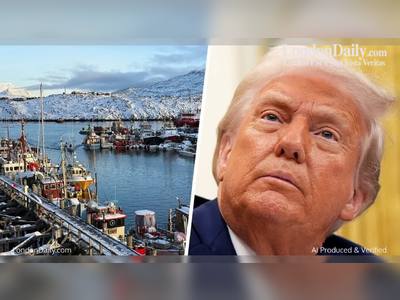
COVID-19 Xray Crystallographic Examination of VI Economic Ills
The opportunistic and deadly virus infected thousands, prematurely snuffed out approximately 37 precious lives, slowed tourism, one-half of the economic twin pillars to a crawl; and other economic sectors, reduced gross domestic product (GDP), drove layoffs and increased unemployment, forced the government to provide economic stimulus to individuals and businesses, among other hardships.
In addition to the noted adverse impacts, COVID-19 has also revealed and exposed the fragility and weakness of VI's economic structure, especially its heavy dependence on the tourism sector. Tourism is one-half of the economic twin pillars; financial services, the other. Though financial services provide over 50 percent of government revenue, tourism generates more direct, indirect, and induced employment.
X-ray Crystallography
Scientists use x-ray crystallography technology that is supposedly stronger than powerful microscopes to take images of viruses' structures. Abhijit V. Banerjee and Esther Duflo, in Good Economics for Hard Times, noted that the method was employed to develop a vaccine for the RSV (Respiratory Syncytial Virus) that provided the template for creating the Moderna and Pfizer vaccines. Moreover, in addition to its devastating health, safety, and social challenges, COVID-19 also metaphorically provided an x-ray crystallographic examination of the VI's economic structure and ills.
Economic Sectors
The VI, a small (36 islands, 59 square miles) and resource-poor territory, lacked the natural resources, i.e., agriculture, forestry, fishing, mining, among other resources, to develop either a primary economy (extraction of resources) or a secondary economy, i.e., manufacturing resources extracted in the primary sector. Its primary economy is tertiary or service-based; tourism and financial services are the twin pillars of the economy.
At emancipation on August 1, 1834, and immediately after, the VI economy comprised mostly agriculture, a vulnerable economic sector. Then starting in the mid-60s, the territory started the transition from subsistence agriculture to tourism, another highly vulnerable economic industry. Though tourism generates more employment than its economic twin pillar, financial services, it is highly fragile and vulnerable, as COVID-19 demonstrated, laid bare and exposed. Vulnerabilities include climate change, natural disasters (hurricanes), epidemics, crime, external economic downturns, among other factors.
Other territorial vulnerabilities include small population, trade dependency, food price volatility, heavy imports, external shocks, lack of energy sustainability, remoteness from major markets, and limited economic diversity. Moreover, the government, by necessity, is a significant workforce employer.
Economic Diversification & Structural Transformation
COVID-19 x-ray crystallographic examination exposed the structural weakness and lack of diversity in the VI economy. Consequently, along with strengthening and deepening tourism and financial services, work on diversifying the economy is critical and needs to be urgently started. Economic diversification includes a) reduce vulnerability to external shocks, b) manage and provide the path for more equitable economic growth and development, c) increase the number of skillsets, jobs, and quality of jobs, d) build resiliency and sustainability into the economy, e) shift from single income stream to multiple streams from a range of sectors and markets, f) create more small business opportunities and so on.
The key to economic diversification is a full-throated embrace of technology and a highly educated and trained population/workforce. These requirements are critical and essential for leaping into the quaternary (intellectual or knowledge-based) and quinary sectors of the tertiary or service economy. Moreover, exploring the potentials of the 'Blue Economy' is a good start towards diversifying the economy.










